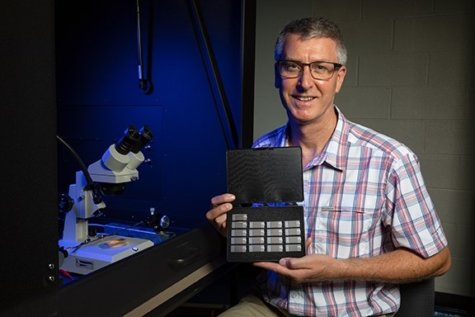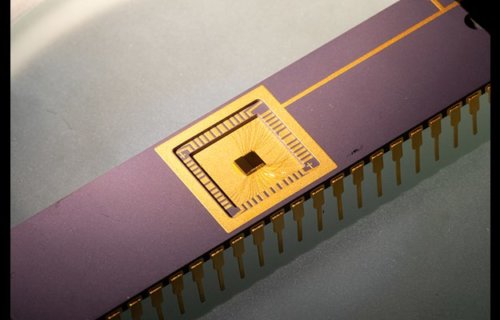FAYETTEVILLE, Ark. — What’s the secret to unlimited power? Could it be in the tip of your pencil? A team at the University of Arkansas say they have successfully created a circuit that can harvest the power of graphene. Their study finds thermal energy in this single layer of graphite can be converted into an electrical current, which physicists thought was impossible for decades.
“An energy-harvesting circuit based on graphene could be incorporated into a chip to provide clean, limitless, low-voltage power for small devices or sensors,” says lead researcher Paul Thibado in a university release.
Making the impossible possible

In the study, Thibado’s team proves freestanding graphene, a single sheet of carbon atoms, can both ripple and buckle in a way that produces energy. Until now, the idea of using graphene as a power source has been controversial. Researchers say this is because it debunks famous physicist Richard Feynman’s conclusion, stating the thermal motion of atoms (Brownian motion) can’t do work. In an achievement thought to be impossible, the U of A team finds that graphene will make an alternating current (AC) in a circuit at room temperature.
In the 1950s, fellow physicist Léon Brillouin declared that adding a single diode — a component allowing an electrical current to move in one direction — to a circuit for energy harvesting also wouldn’t work. To side-step this obstacle, researchers built their circuit with two diodes. This helps convert their alternating current into a direct current (DC). With two diodes running in opposite directions, this allows the current to flow both ways without problems. Study authors add their design actually increases the power a circuit can deliver.
“We also found that the on-off, switch-like behavior of the diodes actually amplifies the power delivered, rather than reducing it, as previously thought,” Thibado explains. “The rate of change in resistance provided by the diodes adds an extra factor to the power.”
Graphene and the future of batteries
The physicists say they used a new field of physics called stochastic thermodynamics to prove that their two-diode approach makes more power. They add that graphene and the circuit share a symbiotic connection. Although their invention is performing work, making energy, the two components keep the same temperature and don’t heat each other up.
The study also discovered that graphene atoms are relatively slow when in motion. This created a current in the circuit that has a low frequency, extremely important for electronics which work better at these speeds.
“People may think that current flowing in a resistor causes it to heat up, but the Brownian current does not. In fact, if no current was flowing, the resistor would cool down,” Thibado explains. “What we did was reroute the current in the circuit and transform it into something useful.”
The Arkansas team’s next challenge will be to see if the energy from their groundbreaking DC current can be stored for later use. This requires them to miniaturize the circuit and pattern it across a silicon chip. If they’re successful in making millions of one-millimeter chips, the once impossible graphene circuit may become the next generation of low-power battery replacements.
The study in the journal Physical Review E.
